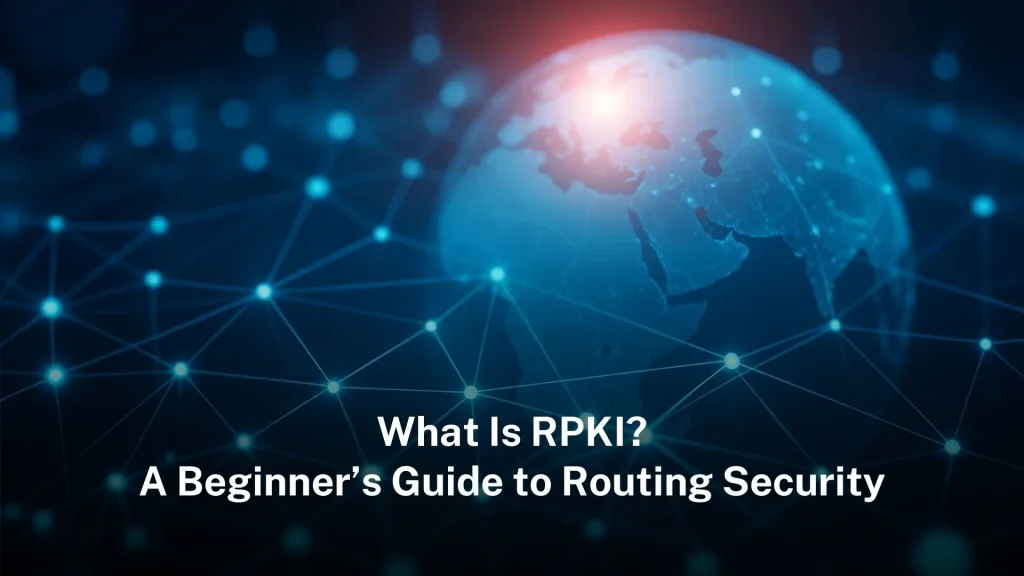Businesses are modernising IPAM in 2025 via AI, automation and zero‑trust to stretch IPv4, secure IoT, and support remote work growth.
IPAM is being reshaped by AI, automation, zero‑trust, IPv6 expansion and rising IoT demands in 2025.
Integration with cybersecurity, cloud and SD‑WAN is now essential for effective IP address management.
The growing IPAM market
The global IP address management market reached a large size by 2025. One report from Summit Strategies said the market was about US $1.2 billion in 2024. It also said the number would keep growing over the next ten years. A different report said the market was worth around US $2.62 billion in 2025. That report said it could more than double by 2033. This steady growth means many companies now see IPAM as a main part of how they run their networks.
The change is not only about how much money the market brings. The reports also showed that the reason behind the growth is new types of technology. Many IPAM companies now try to make tools that help in more ways than before. These tools do not just manage addresses. They also help networks stay secure and run better. They use AI, connect with cloud systems, and work well with IPv6. This makes IPAM a key part of how networks are planned and built. It is no longer something extra. It now plays a leading role.
AI and automation driving IPAM
In 2025, many large companies start using AI to help manage and plan their networks. Gartner said that about 30 per cent of big firms would rely on AIOps to monitor network activity. This change has a strong effect on how IP address management works. The new tools can now track how addresses are used. They can also find problems, like when two devices try to use the same IP. They can spot empty ranges. They give simple advice to fix issues. They also notice strange patterns very quickly.
Some other reports say that automation is now a key part of IP address management. The tools now connect with cloud systems, security platforms and SD‑WAN services. This helps make changes to addresses without any delay. The system can set and update address use without asking staff to do it by hand. This saves time. It also helps stop common mistakes. These tools can keep networks running as they grow. They can do this without adding extra work for teams. AI helps IPAM run in a way that does not need humans to check every step.
IPv6 adoption remains vital
The world ran out of free IPv4 addresses around 2011. Many places have not moved to IPv6 fast. In some large regions, the use of IPv6 is still below 50 per cent. IPv6 gives more space for addresses. It also makes address use easier to manage. It has security features built into its design. It gives networks room to grow. This is important now because the number of devices keeps going up.
Today’s IP address management tools need to manage IPv4 and IPv6 together in one system.They need to plan how to split up the address space. They must follow dual‑stack systems where both types of addresses are in use. They also need to check settings in IPv6, like privacy rules that help keep addresses hidden. These jobs are harder than before. That means the tools must become smarter. They need to help networks keep working without problems. This matters during the time when companies are changing from IPv4 to IPv6.
The need for IPv6 grows stronger each year. Many new devices, especially in mobile and IoT, are set up to use IPv6 by default. Some internet service providers now give out IPv6 addresses before IPv4. This helps reduce pressure on the limited IPv4 pool. But many businesses still run old systems that only work with IPv4. This mix creates problems that need careful planning. IPAM tools must watch how both address types are used. They must show where gaps or overlaps appear. They also need to check if both versions work well together. This helps avoid system errors or downtime.
IoT and network complexity
IP address management tools now try to find all these connected devices. They group the devices based on what they are and what they do. The tools then send this information to security systems. The security tools use the data to spot threats or unsafe devices. This helps teams find risky devices quickly. It also gives early warnings about weak spots in the network. With this help, companies can fix problems before they cause damage.
Many IoT devices have weak security by design. Some do not get regular software updates. Many IoT devices come with simple default passwords that are easy to figure out. Hackers try to find these weak spots to get into networks. After they break in, they might steal information or spread harmful software. IPAM tools help by keeping track of all devices and their behaviour. They can spot when a device acts in a strange way. This can show that the device is hacked or malfunctioning.
In addition, IPAM tools help manage the sheer number of devices. Large businesses may have thousands of connected sensors and cameras. Without tools, keeping track of each device’s IP address is hard. Manual methods lead to errors and missed devices. Automated IPAM systems keep an updated list of devices. They can also alert teams if a new device joins the network without permission. This level of control helps stop attacks before they start. It also supports better planning when networks grow or change.
Zero‑trust and IPAM
Security today works on the idea that no one should be trusted right away. This idea is called zero‑trust. Experts explain zero‑trust as “always check, never trust.” Studies show it works best when it checks who owns a device and follows strict network rules. IP addresses are very important in this system.
IP address management helps by connecting each IP to a specific device and user. Security systems use this information to ask for more proof before letting devices access the network. If a device or address does not pass the checks, the system blocks it. These actions help stop damage when bad actors try to get in. The system also keeps detailed records showing who used which IP and when. This helps with audits and tracking down problems.
Zero‑trust requires constant monitoring of network activity. IPAM tools help with this by providing real-time data about IP address use. They show if a device suddenly behaves in an unusual way or tries to access restricted areas. These tools alert security teams to possible attacks before they grow worse. This early warning can stop threats quickly.
Zero‑trust also means limiting what each device or user can do. IPAM supports this by linking IP addresses to specific permissions. If a device only needs to access certain services, it cannot reach others. This limits the damage if a device is compromised. Companies use IPAM to enforce these rules automatically. It makes networks safer without slowing down normal work.
IPAM’s role grows as networks become more complex. More devices, cloud services, and remote users mean more IPs to track and protect.
Zero‑trust and IPAM work together to keep this complex web secure.
Cloud, SD‑WAN and hybrid environments
Networks now are no longer limited to a single location. They include data centres, cloud services and edge sites. Many teams use cloud-based tools to manage IP addresses. These tools connect with cloud systems using APIs. They keep track of changes to IP addresses throughout the day.
Software-Defined Wide Area Network, or SD-WAN, connects offices and cloud systems in real time. IP address management tools follow these changes closely. They can assign address ranges automatically when needed. These tools also keep detailed records of every change made. This helps users avoid mistakes and network outages. It makes working from different places or remote locations more reliable and smooth.
Compliance and auditing
Rules and laws about data and security are stricter today. Companies need to know who uses every IP address and why. They must keep records of any changes and report them if needed. IP address management systems log who assigned each IP and when it happened. These logs are saved for audits and reviews.
The records also help if there is a security breach. Teams can look back and find bad actions. They can show if a device was attacked or hacked. The logs help prove what steps the company took to fix problems.
Choosing tools for 2025
In 2025, strong IP address management tools come with many useful features. They are built to manage both IPv4 and IPv6 side by side without any trouble. They use simple systems that help watch how addresses are used. They also learn from patterns and help spot problems. These tools connect with security setups like zero‑trust. They also work with cloud services and SD‑WAN platforms. They keep detailed records and support audits when needed.
Some well-known companies now lead this space. Infoblox, BlueCat, Cisco, and Microsoft are seen often in research reports. Their tools work in both cloud-based systems and on-site setups. They also spend a lot on better security, smart features, and automation. This pushes the quality higher for all tools in the market. Other companies now try to match what these leaders provide. This improves how networks are managed across many industries.
FAQs
What makes IPAM different in 2025?
It uses AI and automation. It tracks both IPv4 and IPv6. It links deeply to cloud and security systems. It manages hybrid networks better.
Why does IPv6 matter now?
IPv4 has run out (en.wikipedia.org). IPv6 gives billions of address space. It brings better security features . It is the only way to scale future networks.
How does AI change IP address management?
AI finds conflicts fast. AI spots unused IPs. AI predicts shortages and suggests fixes. AI makes tools smarter than humans alone .
What is zero‑trust and why is it linked to IPAM?
Zero‑trust means “never trust by default” . IPAM logs who owns each IP. It links that to devices and users. Then security systems only allow trusted endpoints.
Do I need a new IPAM tool?
If your tool lacks IPv6, AI, cloud links or logs, you should look at modern options. Today’s networks need smarter tools. Many old ones cannot keep up.










Leave a Reply